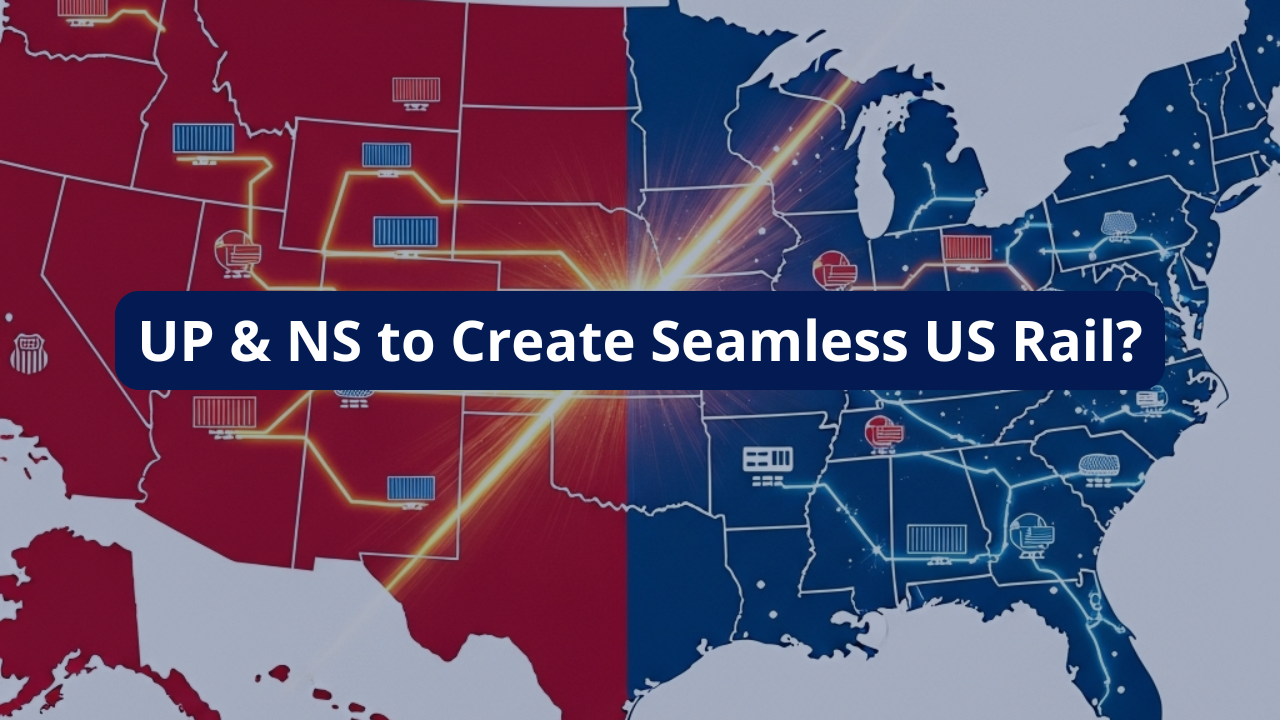
🚆 The First Coast-to-Coast Freight Railroad? Why the Union Pacific–Norfolk Southern Merger Talks Matter to Shippers
The freight landscape braces for a seismic shift as Union Pacific and Norfolk Southern engage in advanced merger discussions. If successful, this groundbreaking deal could establish the first true transcontinental freight rail network in U.S. history, fundamentally reshaping how goods are transported across the nation.
While the proposed UP–NS merger remains uncertain, its ramifications for shippers, container throughput, and inland logistics strategy are far from hypothetical. This article unpacks what's at stake—and what shippers should be preparing for now.
📍 What’s the Merger About?
The potential business combination between Union Pacific, the dominant Western freight rail operator, and Norfolk Southern, a key player on the East Coast, aims to redraw the American rail map. This merger aims to connect East and West Coast ports through a single carrier, thereby eliminating handoffs between networks and reducing transit times across intermodal corridors. This streamlined approach could also reignite competitive interest in rail freight after years of market share losses to trucking.
Ultimately, this isn't just about speed and efficiency; it's also about consolidated market control within the U.S. freight rail network.
🧭 What’s Driving the Deal?
Several powerful forces are propelling these rail merger talks:
- Policy Winds Are Changing: The Trump administration has signaled a clear intent for deregulation across freight transport, opening the door to large-scale M&A activity once viewed as politically risky.
- Operational Momentum: Following the significant reputational crisis stemming from the 2023 Ohio derailment, Norfolk Southern has achieved new operational stability, making it a more viable and attractive partner.
- Competitive Positioning: Rail carriers are aggressively battling to reclaim cargo volumes from over-the-road haulers. A unified, coast-to-coast footprint could be a critical advantage in winning back lucrative long-haul container business.
- Strategic Vision: As observers note, the administration would likely favor "a historic, pro-business" deal that establishes a unified U.S. rail backbone, offering a powerful strategic optic.
🚧 Shippers Have Concerns and They’re Valid
Concerns among shippers moving commodities, containers, or chemicals by rail are palpable and justified. Fewer Class I operators inevitably mean fewer negotiating levers.
Today’s fragmented network currently enables companies to:
- Negotiate rates across multiple carriers
- Switch providers swiftly to avoid service failures
- Control costs via competitive tension
A successful UP–NS merger could reduce the number of major U.S. railroads from six to five, immediately raising significant concerns about:
- Potential Rate Hikes: With less competition, carriers might face reduced pressure to offer competitive pricing.
- Diminished Service Accountability: A single carrier may lead to reduced responsiveness in the event of service issues.
- Logistical Disruptions During Integration: Past mergers, like Union Pacific’s bumpy 1996 integration with Southern Pacific, serve as cautionary tales, often involving temporary service degradation.
🔄 A Freight Shift That Could Trigger Domino Effects
The merger buzz has already stirred intense speculation within the industry:
- Will Berkshire Hathaway’s BNSF counter with a bid for CSX to preserve competitive balance within the U.S. rail freight market?
- Will other transportation players, especially intermodal providers, reshape their networks in response to a potential transcontinental giant?
- Will Surface Transportation Board (STB) approval hinge on stringent conditions around service levels and pricing protections for shippers?
With the STB currently gridlocked between Republican and Democratic appointees, approval could take months. Still, shippers should closely monitor developments.
📦 What Should Importers and Exporters Do Now?
Whether you’re moving furniture out of Long Beach or raw materials into Chicago, this rail merger has direct implications for your supply chain logistics. Here’s what importers and exporters should prioritize:
- Intermodal Planning: Anticipate longer lead times and potential routing disruptions during the transition period following a merger.
- Cost Controls: Conduct a thorough audit of your current rail and drayage spend now, before any potential price harmonization reduces your flexibility.
- Diversification: Actively explore mixed-mode transport options (rail, truckload, and drayage) to avoid over-reliance on a single carrier or mode, thereby building resilience into your logistics strategy.
More discussions around this topic will certainly open during the JOC Inland 2025, Chicago.
If you haven't yet, set some time in your calendar to meet with the BlueCargo team.
----
Updates on Tariffs


